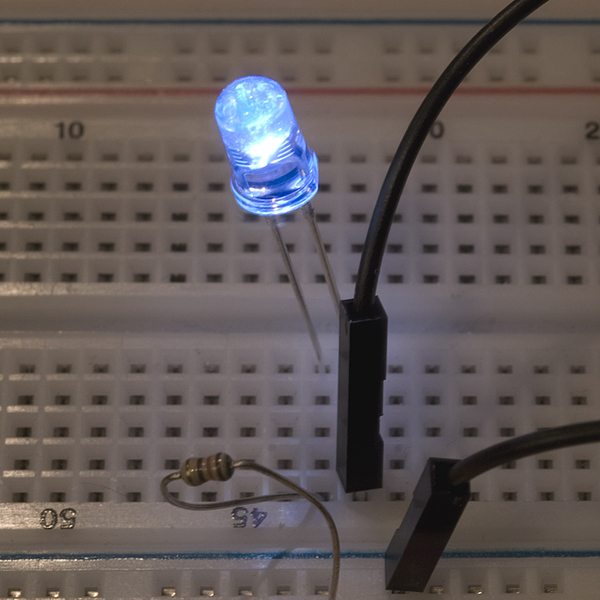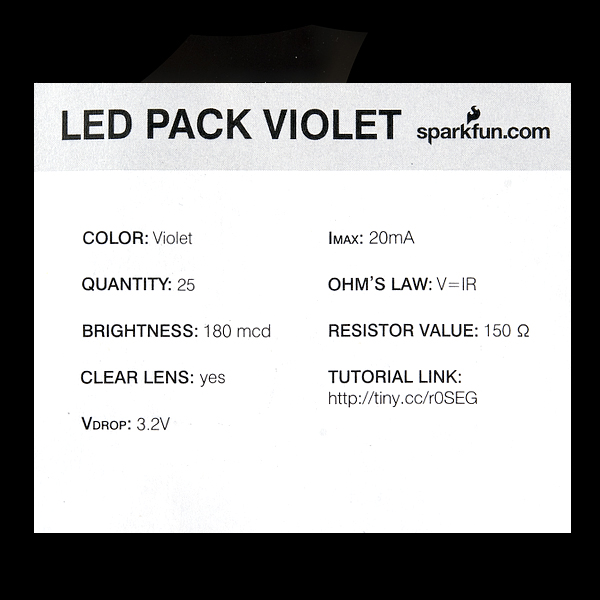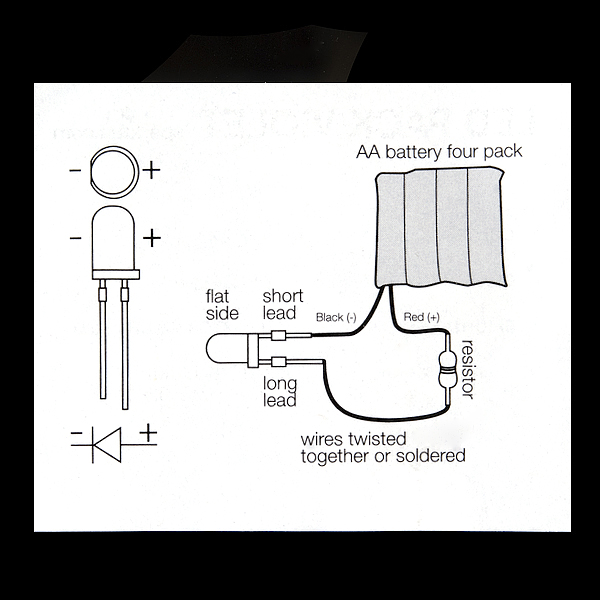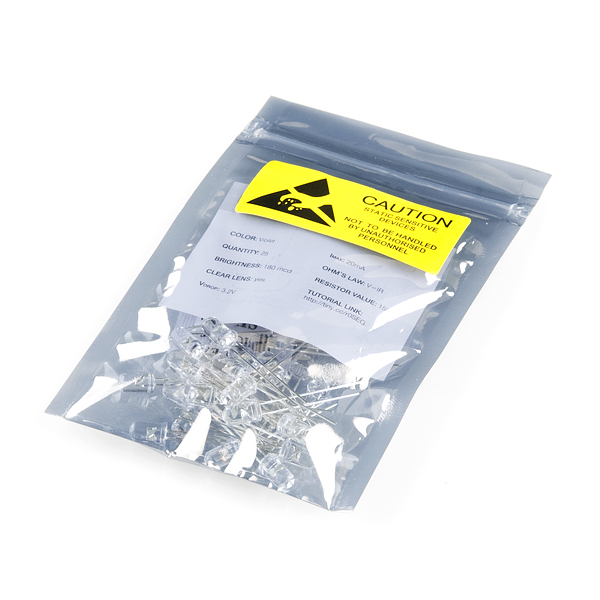LED - Violet 5mm (25 pack)
We all know that you can never get too many LEDs. Don't worry, we've got you covered. This is a pack of 25 LEDs all conveniently packaged in a nice reusable ESD safe bag. Make that next project shine!
- 25 violet LEDs
- Standard size - T1 3/4 5mm
- 180 mcd brightness
- 3.2V forward drop
- Max current 20mA
LED - Violet 5mm (25 pack) Product Help and Resources
Core Skill: Electrical Prototyping
If it requires power, you need to know how much, what all the pins do, and how to hook it up. You may need to reference datasheets, schematics, and know the ins and outs of electronics.
Skill Level: Rookie - You may be required to know a bit more about the component, such as orientation, or how to hook it up, in addition to power requirements. You will need to understand polarized components.
See all skill levels
Comments
Looking for answers to technical questions?
We welcome your comments and suggestions below. However, if you are looking for solutions to technical questions please see our Technical Assistance page.
Customer Reviews
No reviews yet.






It would be really nice if you could list the LED light frequency, in nm, like you have done for the new IR LED bag. Color names can be pretty vague.
If you have trouble getting to the tutorial (http://tiny.cc/r0SEG), make sure the URL is entered exactly as shown (it's very picky about upper/lower case).
Agreed... The wavelength would be good to list. Maybe even a datasheet? :-P
I agree with previous comments,
What is the exact light frequency ? is it just violet or also ultrviolet ?
How bout a pic of an led shining so we can see the color?
It's kind of a blueish red, or reddish blue color. Just kidding. We'll get a shot of it up. It tends more towards blue. A pale reddish blue is the best description. We should have a picture up by next week.
One can calculate in the other direction:
I = Vres/Rres = (Vsupply-Vled)/Rres
So for a 150 ohm resistor, at 6 V supply:
I = (6 V - 3.2 V)/150 ohm = 18.7 mA
at 4.8 V supply:
I = (4.8 V - 3.2 V)/150 ohm = 10.7 mA (about half the capability of the LED in this case.
I suggest the current "Resistor Value: 150 ohm" be deleted and "Rres = (Vsupply-Vled)/Iled" be provided, along with an example or two (6 V and 4.8 V come to mind).
On a related note: It would be helpful to have a link to the datasheet for the LEDs.
Thanks for your consideration,
Eric
I think the "Resistor Value: 150 ohm" statement is counterproductive.
Firstly, the packaging also states a current of 20 mA, a Vdrop of 3.2 V, and Ohm's Law. But:
R = V / I = 3.2 V / 0.02 A = 160 ohm
If you assume that the "Resistor Value" was meant to be the resistance of the required current-limiting resistor, then the value given (or any other value) is not generally valid. In the general case:
The voltage to be dropped across the resistor:
By Kirkhoff's voltage law: Vres = Vsupply - Vled
By Ohm's Law, Rres = Vres / Ires
By Kirkhoff's current law: Ires = Iled
Combining these give us:
Rres = Vres/Ires = Vres/Iled = (Vsupply - Vled)/Iled
Although Vled and Iled are specified (3.2 V and 0.02 A, respectively), Vsupply depends on how these LEDs are to be powered. The package insert shows "AA battery four pack". Nominally, 4 alkaline cells in series provide 6 V, so:
Rres = (Vsupply-Vled)/Iled = (6 V-3.2 V)/0.02 A = 140 ohm
However, nominally 4 NiMH cells in series provide 4.8 V, so:
Rres = (Vsupply-Vled)/Iled = (4.8 V-3.2 V)/0.02 A = 80 ohm
[To be continued...]